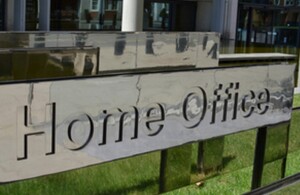New UK passport unveiled
The redesigned UK passport now features strengthened security features and iconic images from across the nation.

The new 10-year passport will be issued from October, with pages containing well-known UK scenes including the white cliffs of Dover, the Gower peninsula, Ben Nevis and the Giant’s Causeway.
The use of these images, recreated through special printing techniques, is just one of a number of enhanced security features contained in the passport, which will give UK citizens added protection from identity theft and fraud and ensure speedier travel across borders.
The new passport will replace the current UK ePassport, which was upgraded in 2006 with the addition of an electronic chip to hold the owner’s details, and to comply with the US visa waiver programme.
The personal details page of the passport will be moved to the second page in the passport booklet, in common with other passports in Europe and around the world, to help speed up travellers’ passage through border controls.
Key security measures
New security measures include:
- moving the chip which stores the holder’s details to the inside of the passport cover where it will no longer be visible. This gives additional physical protection as well as making it much harder to replace the chip without damage to the passport cover being spotted
- a secondary image of the holder printed onto the observations page
- new designs now stretching across two pages
- a new transparent covering which includes several holograms to protect the holder’s personal details
Identity and Passport Service statement
Sarah Rapson, chief executive of the Identity and Passport Service, said:
‘The new passport features a host of scenes from across the UK.
‘Through its combination of physical and electronic security features, the UK passport remains one of the most secure and trusted documents in the world, meeting rigorous international standards.
‘The new design is part of our strategy to stay ahead of criminals who look to fraudulently alter or copy passports.’
Notes to editors
De La Rue takes over the contract for passport production in October 2010 when the current contract expires. The value of the 10-year contract is £400 million, representing value for money for the taxpayer by providing an upgraded product for less than the previous contract.
The personal details page of the passport has been moved to the front of the book, in common with many European countries and New Zealand, USA, Australia, Canada, Russia, Japan, Pakistan, Republic of Korea (south) and Liberia.
Passports have changed immeasurably in their design since the launch of the first modern UK passport in 1915. It was a one-page document folded into eight, with a cardboard cover. It contained a photo and signature, together with details of the holder, such as the size of a person’s nose and eyes, and also described their complexion.
Since then, 15 different versions of the passport have been issued. Find out more about the the history of the passport.
The electronic passport or ePassport was launched in 2006 and featured a microchip and facial biometrics. There are now around 25 million ePassports in use.
During the last financial year (09/10) the Identity and Passport Service issued 5.35 million passports.
An adult passport costs £77.50 for standard service and £112.50 for the one week Fast Track service. A child passport costs £49 for standard service and £96.50 for the one-week Fast Track service.
Images of the new passport design are available on request from the Home Office press office on 020 7035 3535. Or you can download them from the Home Office Flickr photostream (below).